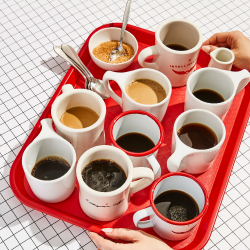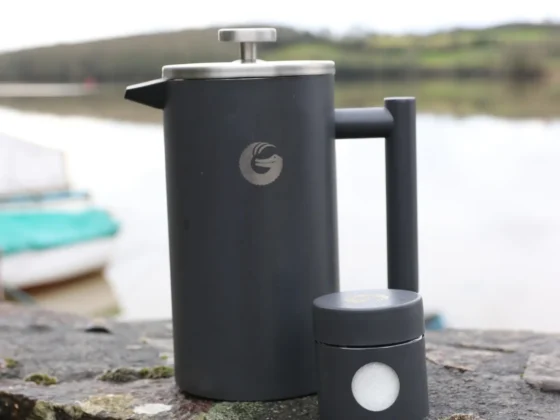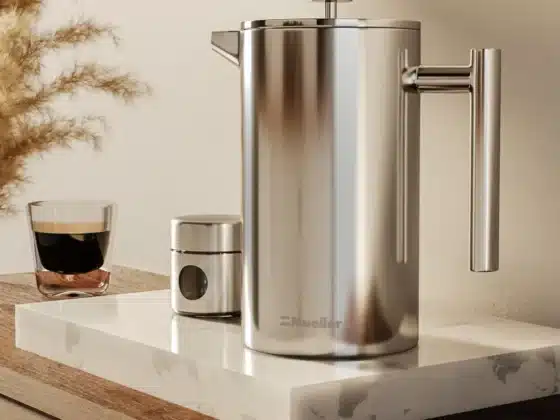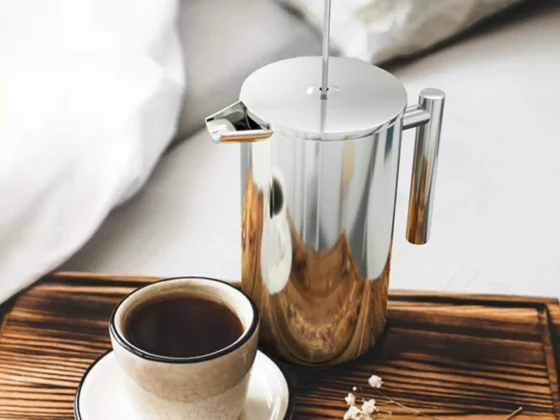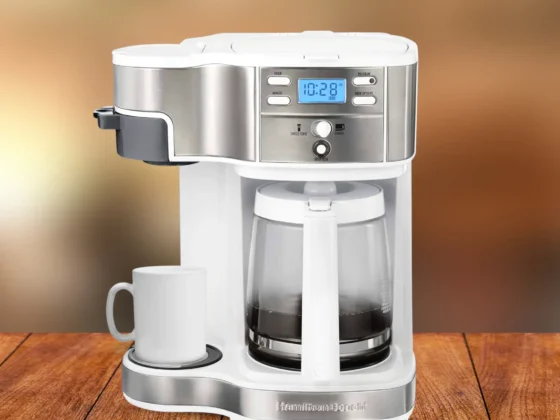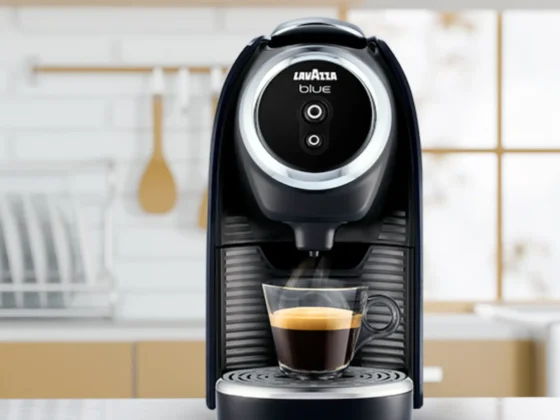The debate of AeroPress vs Pour-Over is a hot topic among coffee aficionados. While AeroPress is famed for its speed and robust brew, Pour-Over is revered for its ritualistic process and nuanced flavors. Each method appeals to different tastes and lifestyles, making the choice a personal voyage for every coffee lover. The team at The Coffee Guru dives into an insightful comparison of these popular brewing methods, evaluating them on various fronts such as flavor profiles, ease of use, cost, and environmental impact. Whether you’re a seasoned barista or a casual brewer, this exploration aims to shed light on which method might align with your coffee brewing aspirations. Join us as we dissect the pros and cons of AeroPress and Pour-Over, assisting you in finding your perfect brew match.
Pour-Over vs AeroPress: Key Takeaway
- Speed vs Serenity: AeroPress is your companion for a quick coffee fix, while Pour-Over invites a leisurely, mindful brewing process.
- Flavor Adventure: Experience a bold, robust flavor with AeroPress or explore complex, nuanced tastes with Pour-Over.
- Cost Consideration: AeroPress tends to be a more budget-friendly initial investment, whereas Pour-Over can range from affordable to premium depending on your equipment choices.
- Eco-conscious Brewing: Both brewing methods offer sustainable options with reusable filters and durable equipment, aligning with eco-friendly coffee practices.
- Personalized Brewing Journey: Whether you’re a casual coffee drinker or a brewing enthusiast, the choice between AeroPress and Pour-Over caters to personal preferences, lifestyle, and the desire for either convenience or brewing artistry.
AeroPress vs Pour-Over: Understanding the Basics
The journey of brewing a delightful cup of coffee is as enriching as sipping on it. Two popular methods that coffee aficionados swear by are AeroPress and Pour-Over. Each of these methods has its own set of loyalists due to the unique flavor profiles and brewing experiences they offer. Here, we delve into the genesis of AeroPress and the evolution of Pour-Over, understanding their core differences and similarities.
The Genesis of AeroPress
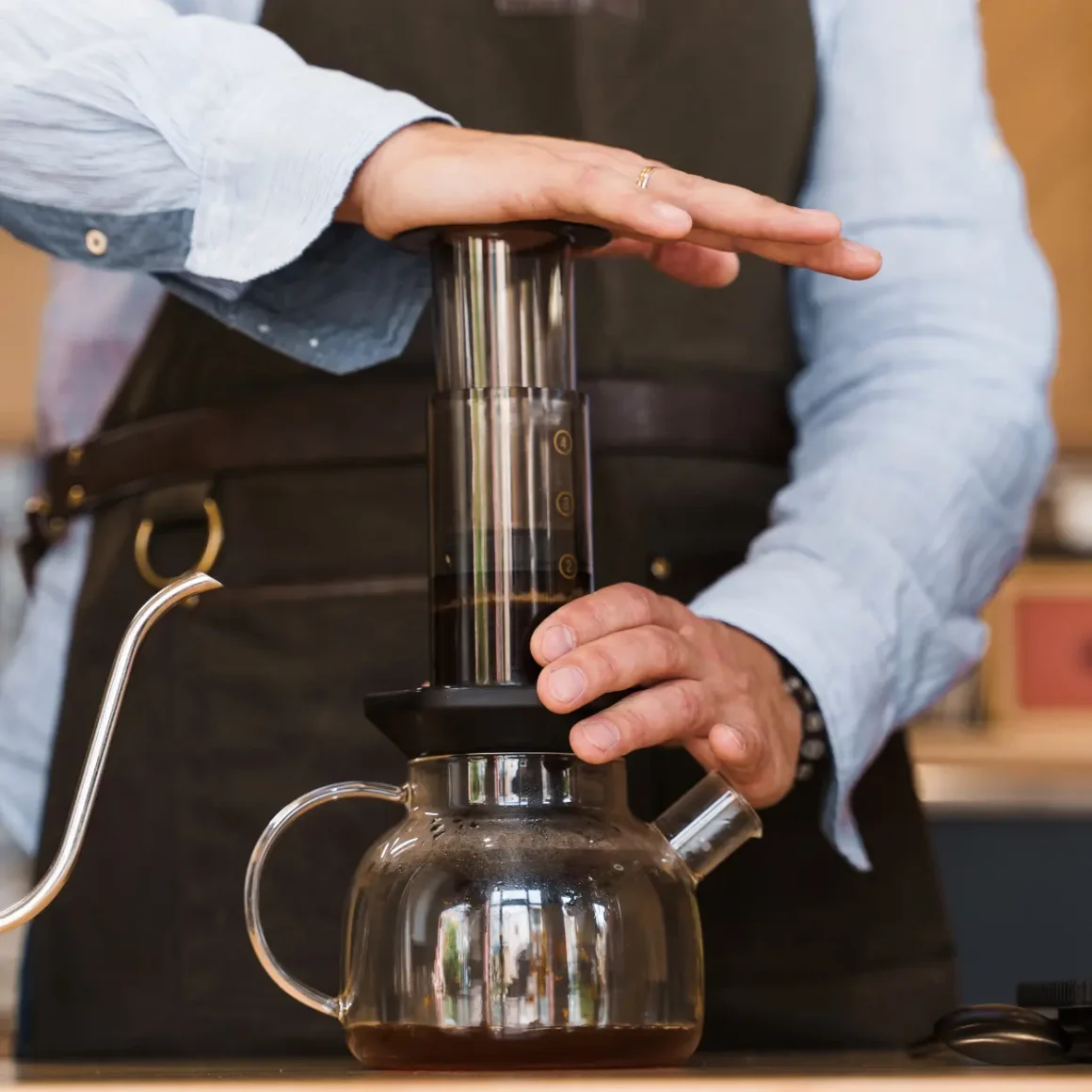
The AeroPress is a modern invention in the coffee world, bringing a unique approach to brewing. Let’s explore how the AeroPress came into being, its design, and how it has created a community of its own.
- Invention and Initial Reception: The AeroPress coffee maker was invented in 2005 by Alan Adler, a Stanford engineering instructor. Initially, it caught the eye of the coffee community due to its compact design and the promise of a rich and smooth cup of coffee within minutes.
- Design and Functionality: AeroPress operates on air pressure where the coffee grounds and water are mixed together in a cylindrical chamber, and then forced through a filter by pressing a plunger.
- Community and Cult Following: Over the years, AeroPress has garnered a cult following. Various competitions and communities have sprung up around the world, where enthusiasts share brewing techniques and recipes.
The Evolution of Pour-Over
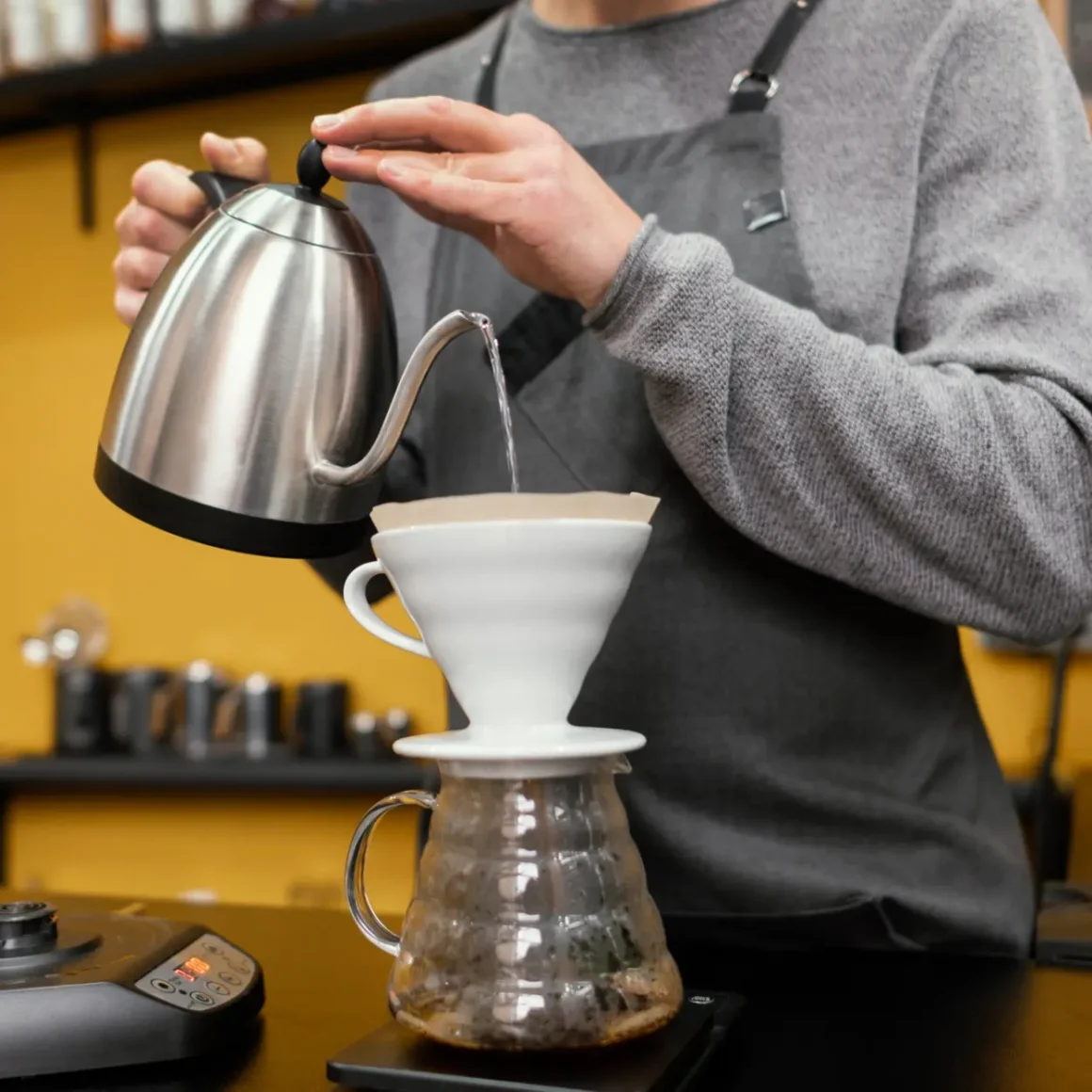
Pour-Over brewing has a rich history, having evolved over the decades to become a beloved choice among coffee purists today. This section sheds light on the evolution of Pour-Over coffee, from its early beginnings to its modern-day popularity.
- Early Beginnings: Pour-over brewing can trace its roots back to early coffee drinkers but gained modern popularity with the invention of the Chemex pour-over coffee maker by Peter Schlumbohm in 1941; following his immigration to the United States from Germany in 1935, Schlumbohm conceived the renowned Chemex coffee brewing apparatus. Its design drew inspiration from the Bauhaus school’s artistic ethos and took shape with cues from laboratory apparatus, notably the Erlenmeyer flask. This innovative creation, prominently featured during James Bond’s breakfast scene in “From Russia with Love,” stands as the pinnacle among his extensive portfolio of over 300 patented designs.This method further diversified with the introduction of other devices like the Hario V60 pour-over. (1)
- Methodology: The pour-over technique entails the manual act of gently streaming hot water over coffee grounds nestled within a filter. Subsequently, the water flows through the coffee grounds and the filter, ultimately finding its way into a carafe or mug.
- Popularity and Preference: The control over brewing variables like the grind size, water temperature, and pouring speed allows coffee connoisseurs to craft a cup to their exact preferences. This control has contributed to the popularity and longevity of pour-over coffee.
Key Differences and Similarities
As one delves into the realm of coffee brewing, understanding the differences and similarities between AeroPress and Pour-Over brewing methods can help in making an informed decision. This section aims to highlight the key aspects that set these methods apart and where they converge.
- Brewing Time: AeroPress boasts a quicker brewing time as compared to the pour-over method which requires a more patient and steady pour.
- Flavor Profile: Pour-over generally yields a cleaner and more complex cup of coffee, while AeroPress is known for producing bold, robust coffee.
- Ease of Use: Both methods require a bit of technique and understanding, but AeroPress might be more forgiving for beginners due to its design.
- Clean Up: AeroPress has a more straightforward cleanup process as compared to some pour-over setups.
- Portability: The compact design of AeroPress makes it a favorite for on-the-go coffee drinkers, while pour-over setups could be more cumbersome to travel with.
The AeroPress and pour-over methods represent two distinct philosophies in the coffee brewing world. Each has its own set of advantages, and the choice between the two often boils down to personal preference in flavor, the brewing experience, and lifestyle compatibility. By understanding their origins, methodologies, and key contrasting features, coffee enthusiasts can better navigate their brewing journey.
AeroPress vs Pour-Over: Diving into Brewing Techniques
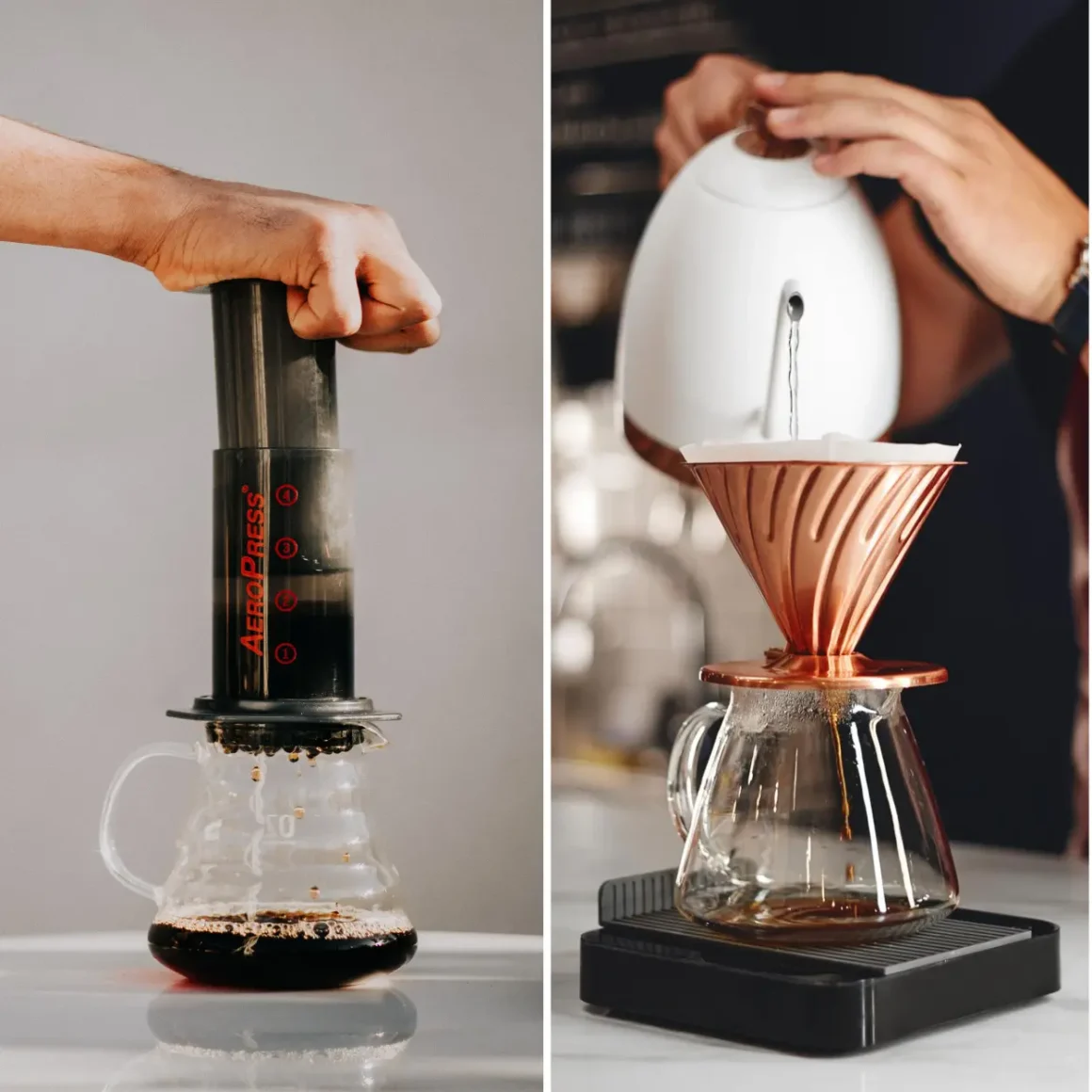
When it comes to brewing coffee, the method you choose can significantly impact the flavor, aroma, and overall experience. Two popular methods among coffee enthusiasts are AeroPress and Pour-Over. Both have their unique set of techniques and outcomes. In this content, we will dissect the brewing processes of AeroPress and Pour-Over, and delve into the pivotal role of grind size in achieving that perfect brew.
AeroPress Brewing Process
The AeroPress brewing process is a blend of simplicity and efficiency, making it a favored choice for those seeking a quick, yet rich cup of coffee. Here’s a breakdown of the AeroPress brewing method:
- Setup: Begin by assembling your AeroPress. Ensure the plunger is at the bottom, place a filter in the cap, and attach it to the chamber.
- Coffee and Water Preparation: Measure and grind your coffee beans to a texture slightly finer than table salt. Heat water to about 175°F to 185°F.
- Brewing: Add coffee to the AeroPress chamber, followed by water. Stir the mix for about 10 seconds.
- Pressing: Attach the cap, flip the AeroPress, and press down the plunger slowly for about 20 to 30 seconds.
- Serving: Once fully plunged, your coffee is ready to be served. You might want to dilute it with hot water to your liking if it’s too strong.
This simplified process on how to use an AeroPress illustrates why it’s a go-to for many coffee lovers, especially when time is of the essence.
Pour-Over Brewing Method
Pour-over brewing is about control and precision, allowing for a more nuanced coffee experience. Below is the outline of how to make pour over coffee:
- Setup: Place a filter in your pour-over brewer, whether it’s a Chemex, Hario V60, or another type. Place it over a carafe or coffee mug.
- Coffee and Water Preparation: Measure and grind your coffee beans to a medium-coarse consistency. Heat your water to about 195°F to 205°F.
- Brewing: Start by wetting the coffee grounds with a small amount of water, allowing it to bloom for about 30 seconds. Then, continue pouring water in a slow, steady spiral, ensuring all the grounds are saturated.
- Serving: Once the water has dripped through completely, your coffee is ready to be served.
- This methodical approach allows for a clean, complex cup of coffee, showcasing the subtle flavor notes of your coffee beans.
Importance of Grind Size
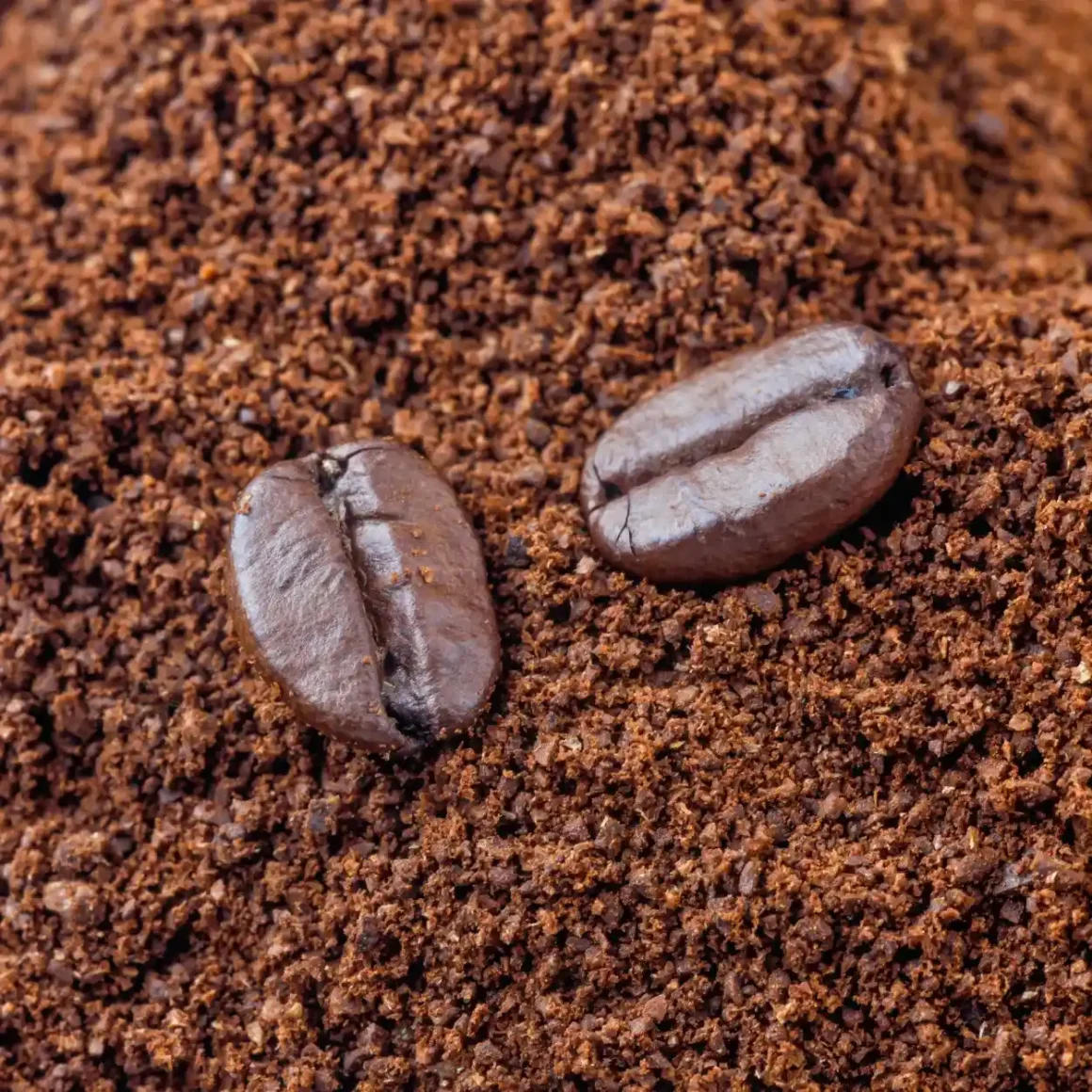
Grind size is paramount in coffee brewing, as it greatly affects the extraction rate of coffee solubles. Here’s why it matters:
- Extraction Rate: A finer grind augments the extent of surface area exposed to water, thereby expediting the extraction process, whereas a coarser grind decelerates it.
- Flavor Profile: The right coffee grind size can help achieve the desired balance between bitterness, acidity, and sweetness. An incorrect grind size can lead to under-extraction (sour, less pleasant flavors) or over-extraction (bitter, harsh flavors).
- Consistency: A consistent grind size ensures even extraction, contributing to a better coffee flavor.
The grind size will vary between AeroPress and Pour-Over methods due to the difference in brewing techniques. For AeroPress, a finer grind is often recommended, while Pour-Over typically requires a medium to coarse grind.
Speed Comparison Between Brewers
When it comes to brewing coffee, the time it takes can be a significant factor in choosing the right method, especially during busy mornings. In this section, we’ll compare the speed of brewing between the AeroPress and Pour-Over methods.
AeroPress Brewing Time
The AeroPress is known for its quick brewing process. Once your coffee grounds and hot water are ready, it takes merely a few minutes to complete the brewing. Specifically, the actual pressing process takes around 20 to 30 seconds, but including the time for stirring and settling, the entire brewing process can be completed in under two minutes. This speed is highly advantageous for individuals who are on a tight schedule but still want to enjoy a freshly brewed cup of coffee.
Pour-Over Brewing Time
On the other hand, the pour-over method is considerably slower. The process requires a steady and slow pouring of water over the coffee grounds, which needs to be done in a controlled manner to ensure proper extraction. The total time can range anywhere from 3 to 5 minutes or more, depending on the amount of coffee you are brewing and your pouring speed. This method is more suited for a relaxed and leisurely coffee brewing experience, where one can appreciate the ritual and the nuanced flavors that emerge through the process.
Brew Quantity: AeroPress vs Pour-Over

The amount of coffee that can be brewed at once is a vital consideration for many coffee enthusiasts, especially when catering to multiple people. In this section, we will compare the brew quantity capabilities of AeroPress and Pour-Over methods to provide a clear understanding of what each brewing method offers in terms of quantity.
AeroPress Brew Quantity
The AeroPress is generally designed for single-cup brewing, with a maximum capacity of around 8 to 10 ounces per brew. It’s an excellent choice for individuals who typically brew coffee for themselves. However, it can be slightly limiting when attempting to brew coffee for multiple people. While it’s possible to brew concentrated coffee with the AeroPress and then dilute it to serve more people, the process can become tedious if catering to a larger group.
Pour-Over Brew Quantity
The Pour-Over method, on the other hand, offers more flexibility in brew quantity. Depending on the size of the pour-over apparatus used, it’s possible to brew anywhere from a single cup to several cups of coffee at a time. For instance, larger pour-over brewers like certain Chemex models can brew up to 10 cups or more in a single go. This feature makes the pour-over method a more suitable choice for those looking to brew larger quantities of coffee, whether for a family or a small gathering.
AeroPress vs Pour-Over: Flavor Profiles & Aroma
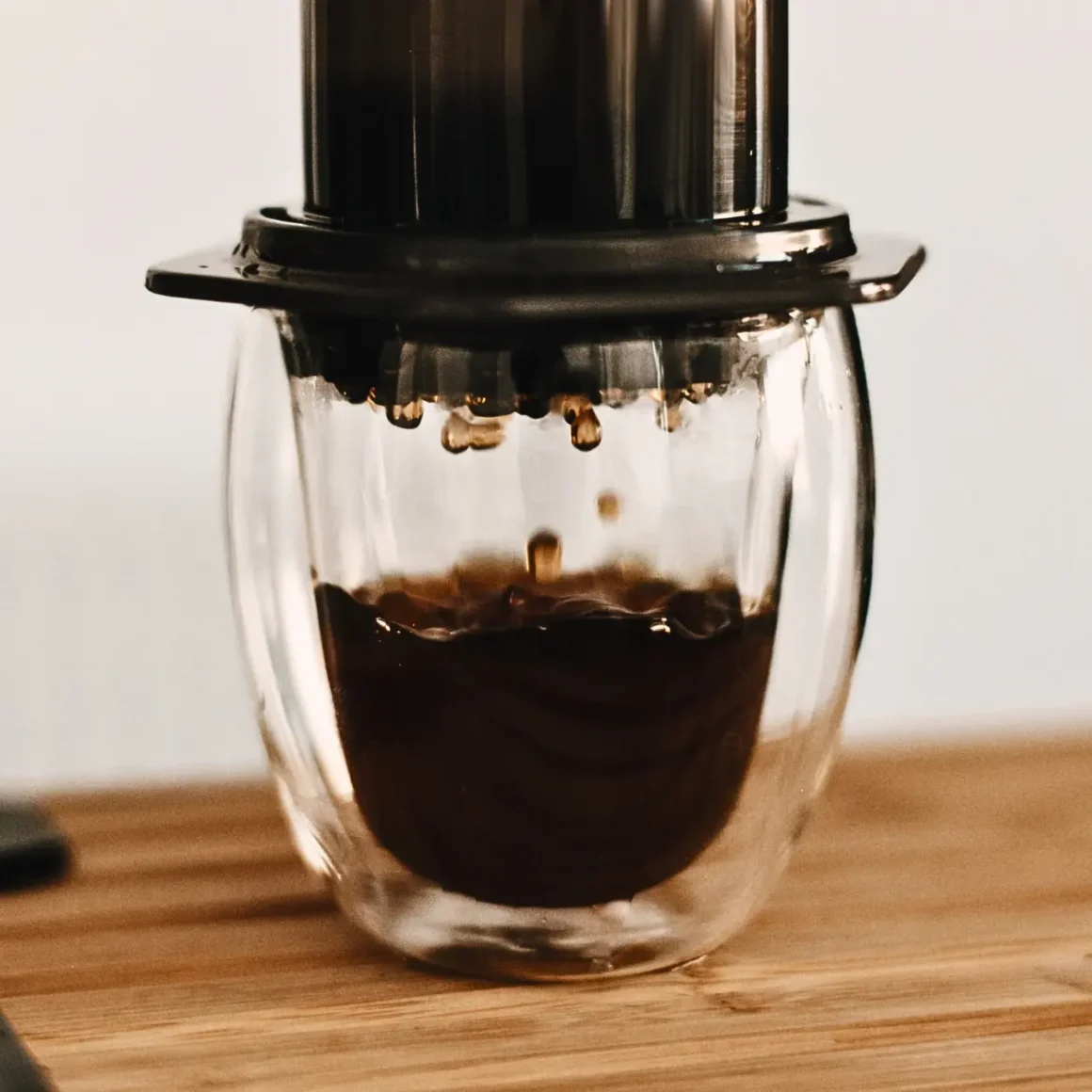
The path to a satisfying cup of coffee is often guided by personal preferences in flavor and aroma. The choice between AeroPress and Pour-Over brewing methods can significantly affect these aspects. Each method, with its unique brewing dynamics, renders a distinct taste and aromatic profile to the coffee. In this discussion, we will delve into the flavor palettes and aromas associated with AeroPress and Pour-Over brewing methods, alongside exploring how brewing time influences flavor.
The Flavor Palette of AeroPress
The AeroPress coffee maker is celebrated for its ability to produce a robust and smooth cup of coffee. Here’s a closer look at its flavor profile:
- Strength: The AeroPress is capable of brewing a strong and concentrated coffee, often compared to espresso, especially when using the inverted method. (2)
- Smoothness: Despite its strength, AeroPress coffee is noted for its smoothness and low acidity, which makes it gentle on the stomach.
- Versatility: AeroPress is versatile in flavor output. By tweaking the coffee-to-water ratio, grind size, or brewing time, one can explore a range of flavor profiles from bold and robust to light and fruity.
The Taste Spectrum of Pour-Over
Pour-Over, especially when brewed with the best pour over coffee maker, is often the choice for those who appreciate a clean and complex cup of coffee. Here’s what it offers:
- Clarity: Pour-Over brewing tends to highlight the distinct flavors and aromas inherent in different coffee bean varieties. It’s excellent for tasting single-origin beans.
- Clean Cup: The method typically results in a clean cup with bright acidity and a range of flavor notes, allowing for a complex tasting experience.
- Control: The manual nature of pour-over brewing offers control over water temperature and pouring rate, enabling the tweaking of flavor extraction to personal preference.
Impact of Brewing Time on Flavor

Brewing time is a critical factor that significantly impacts the flavor and aroma of coffee, regardless of the method used.
- Extraction: A longer brew time means more extraction, which can enhance certain flavors but also risk over-extraction, leading to a bitter taste. Conversely, a shorter brew time can result in under-extraction, yielding a sour or weak coffee.
- AeroPress Timing: With AeroPress, the brewing time is usually short, which contributes to a bold yet smooth flavor profile, minimizing the risk of over-extraction.
- Pour-Over Timing: Pour-Over, on the other hand, has a longer brewing time, which can highlight a coffee’s complex flavor notes, but also requires a precise technique to avoid over-extraction.
The exploration of flavor profiles and aroma in AeroPress and Pour-Over brewing methods reveals a world of taste possibilities. Whether you’re drawn to the bold and versatile flavors from an AeroPress or the refined and complex notes from a Pour-Over, understanding the impact of brewing time and technique can significantly enhance your coffee brewing and tasting experience.
Accessibility & Convenience
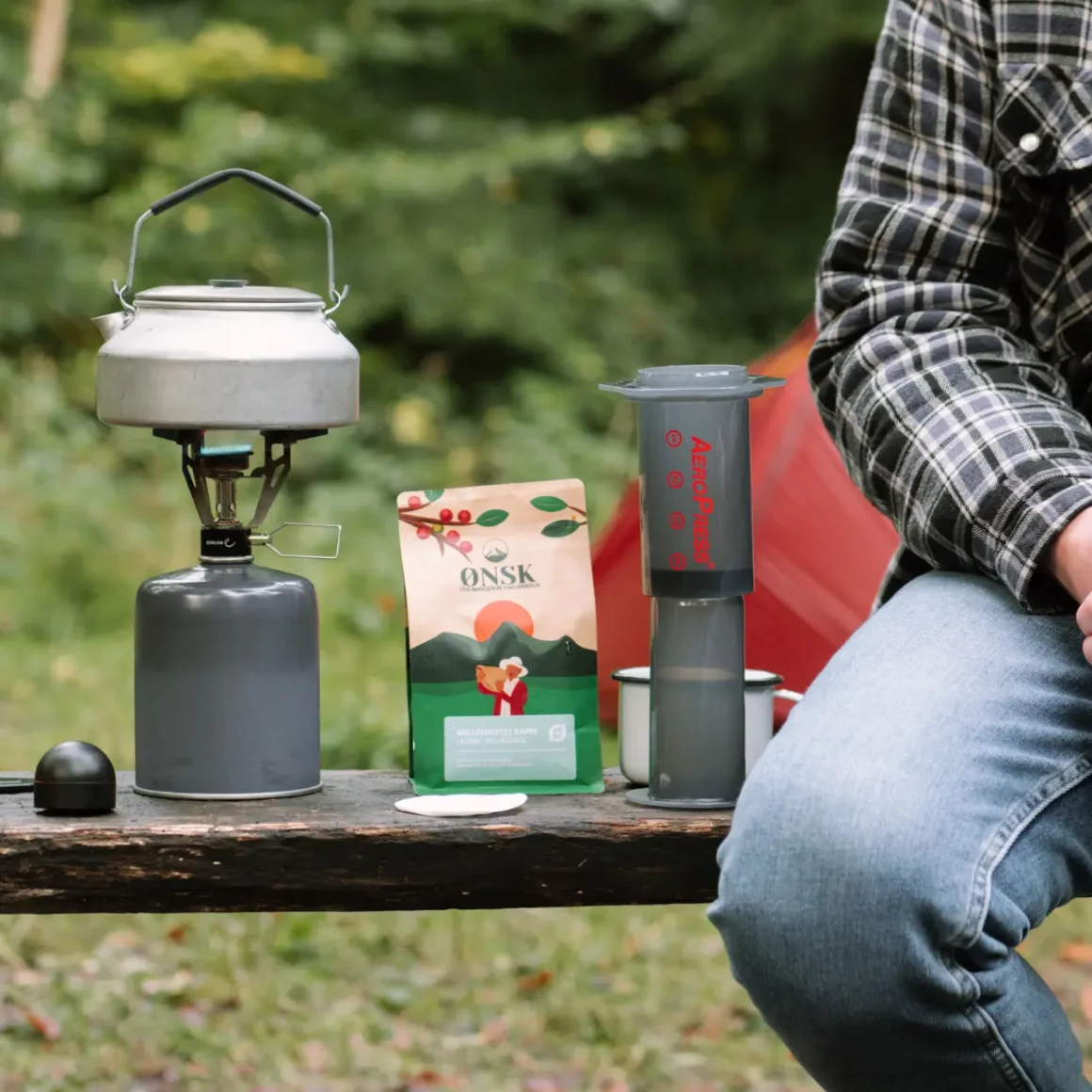
The quest for a perfect cup of coffee at home or on the go often hinges on the accessibility and convenience of the brewing method chosen. Both AeroPress and Pour-Over brewing methods have their unique advantages and considerations when it comes to portability, set-up, filter sizes, and cleaning and maintenance. This analysis aims to provide insight into these aspects, aiding in making an informed choice based on personal preferences and lifestyle.
The Portability of AeroPress
The AeroPress is often hailed for its portability, making it a favorite among travelers and coffee enthusiasts on the move.
- Compact Design: As previously discussed, the compact and lightweight design of the AeroPress coffee maker makes it easy to pack and carry, whether you’re going camping or simply heading to the office.
- Durable Material: Made from durable plastic, the AeroPress can withstand the rigors of travel without the risk of breakage that comes with glass or ceramic brewers.
- Quick Brew Time: Its fast brewing time is a boon for those seeking a quick coffee fix without compromising on quality.
The Set-Up of Pour-Over

Pour-over brewing, while not as portable, offers a ritualistic and controlled brewing process.
- Equipment: The set-up requires a pour-over coffee maker, a carafe or mug, and potentially a gooseneck kettle for precise water pouring. It might not be as travel-friendly due to the multiple pieces of equipment needed.
- Space: Pour-over set-ups generally require more space, making them more suited for home or office environments with ample countertop space.
- Time: The brewing process is more time-consuming, which might not always align with a hurried morning routine.
Filter Sizes for Each Brewer
The choice of filter size can impact the ease of brewing and the flavor profile of the coffee.
AeroPress Filter: AeroPress utilizes small, round, specific AeroPress filters that are easy to store and replace.
Pour-Over Filter Sizes: Pour-over brewing often uses larger filters. The common sizes are Coffee Filter 2 and Coffee Filter 4, with the latter being suitable for brewing larger quantities of coffee. Choosing the right pour over coffee filter size can impact the strength and clarity of the brew.
Cleaning and Maintenance
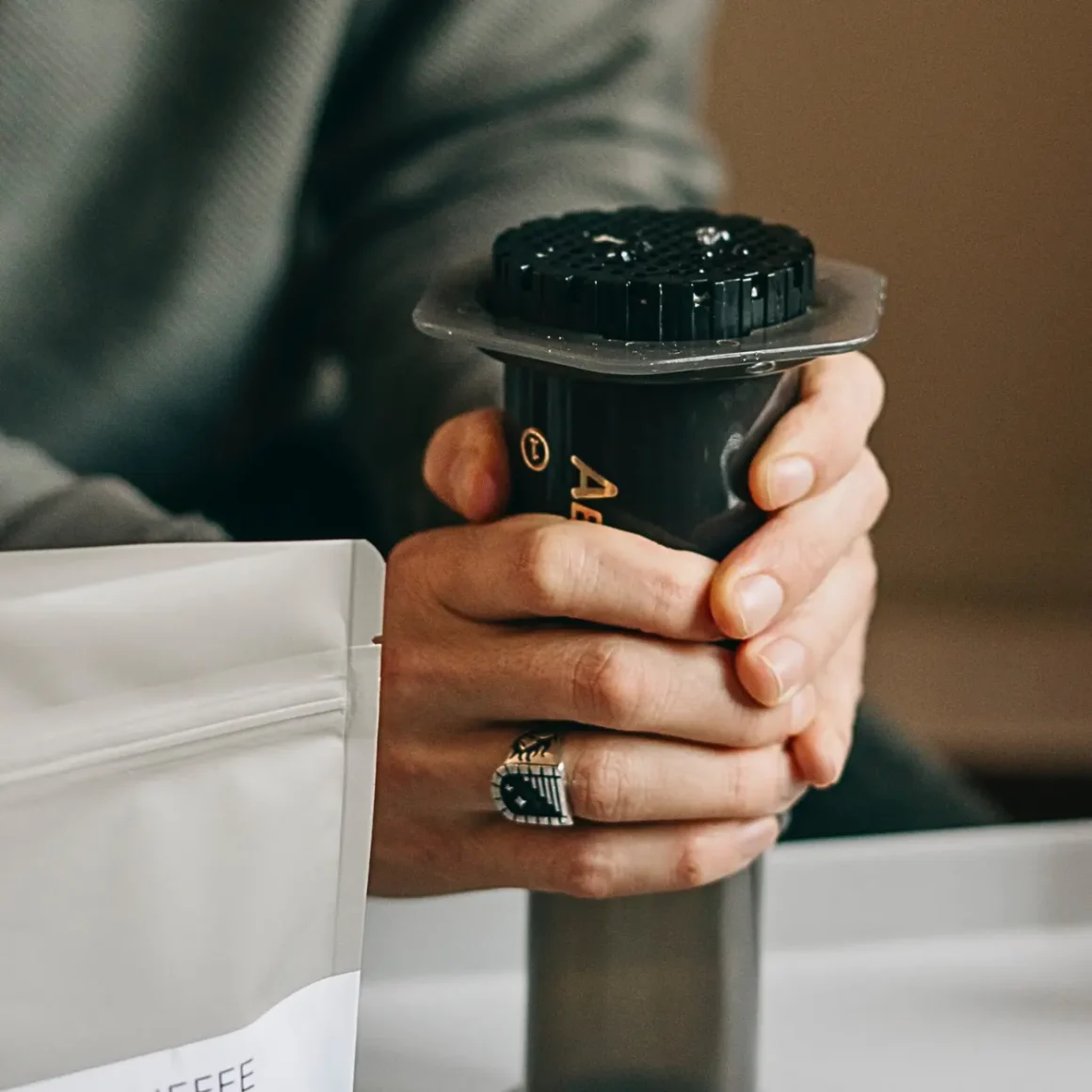
Ease of cleaning and maintenance is crucial for a hassle-free coffee brewing experience.
AeroPress: Cleaning the AeroPress is a breeze. A simple rinse and wipe are often sufficient to keep it ready for the next brew.
Pour-Over: As mentioned before, pour-over equipment may require a bit more attention during cleaning, especially if you are using a glass or ceramic brewer. However, it’s generally straightforward and easy to maintain.
In summary, the AeroPress shines in portability and ease of cleaning, making it a convenient choice for individuals on the move or with tight schedules. On the flip side, Pour-Over brewing, with its calm, methodical process, and varied filter size options, is more suited for relaxed environments where one can savor the brewing ritual. The choice between the two ultimately aligns with personal preferences and the lifestyle of the coffee drinker.
Pour-Over vs AeroPress: Price Comparison
When deciding between the AeroPress and Pour-Over brewing methods, price is a factor that can influence the choice of many coffee enthusiasts. Both brewing methods offer different price points based on the equipment and accessories required for brewing. Here, we dissect the price comparison between the AeroPress and Pour-Over methods to provide a clearer financial perspective for potential buyers.
AeroPress Coffee Maker
The AeroPress is often seen as a budget-friendly option. The basic kit usually includes the brewing chamber, plunger, filters, and sometimes additional accessories like a scoop or stirrer. The price for a basic AeroPress kit can range from $30 to $40, making it an affordable choice for many. Furthermore, the AeroPress’s durable design ensures a longer lifespan, providing good value for the money spent.
Pour-Over Coffee Maker
Pour-over coffee makers come in a variety of styles and materials, which can significantly affect their price. A basic plastic or ceramic pour-over brewer can be quite affordable, often priced around $15 to $30. However, higher-end models made of glass or stainless steel, like the Chemex or Hario V60, can range from $40 to over $100. In addition to the brewer itself, a gooseneck kettle for precise pouring and a good quality grinder to achieve the right grind consistency are often recommended, which can add to the overall cost.
Accessories and Filters
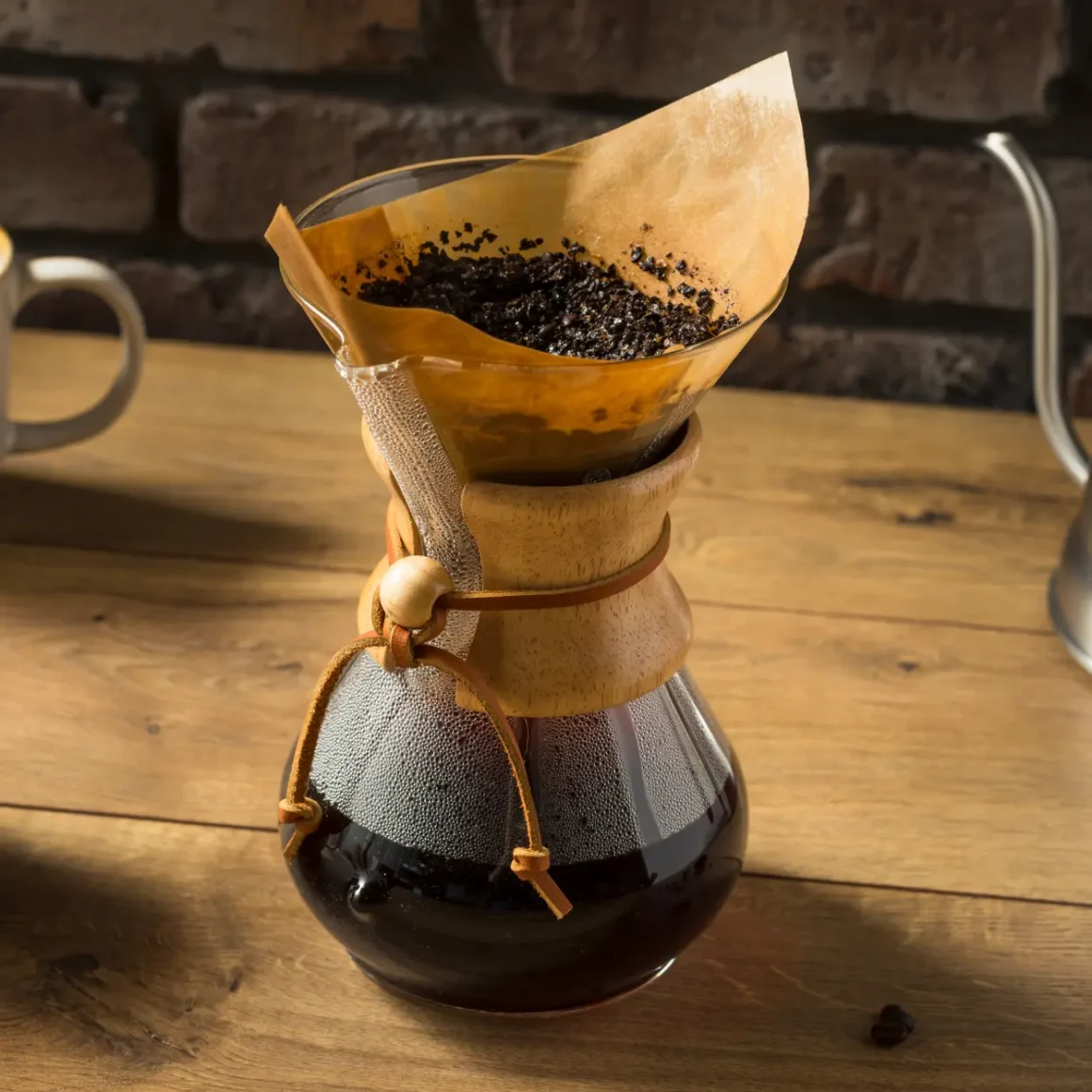
Both brewing methods require filters. AeroPress filters are typically less expensive than pour-over filters. However, some pour-over enthusiasts opt for reusable metal filters, which can be a cost-effective solution in the long run. Similarly, reusable metal filters are also available for AeroPress, providing an eco-friendly and cost-effective alternative to disposable paper filters.
Long-Term Investment
Over time, the total cost can accumulate, especially if one opts for higher-end pour-over equipment or frequently purchases disposable filters. However, the long-term investment could be justified by the quality of coffee and the brewing experience provided.
The initial investment for an AeroPress coffee maker tends to be lower and more straightforward, making it a budget-friendly choice. On the other hand, the pour-over method can be either affordable or pricey depending on the choice of equipment and accessories. Both brewing methods offer a range of prices to accommodate different budgets, yet provide distinct brewing experiences. The choice between the two will come down to individual financial comfort, coffee brewing preferences, and the value placed on the coffee-making experience.
Sustainability & Environmental Impact
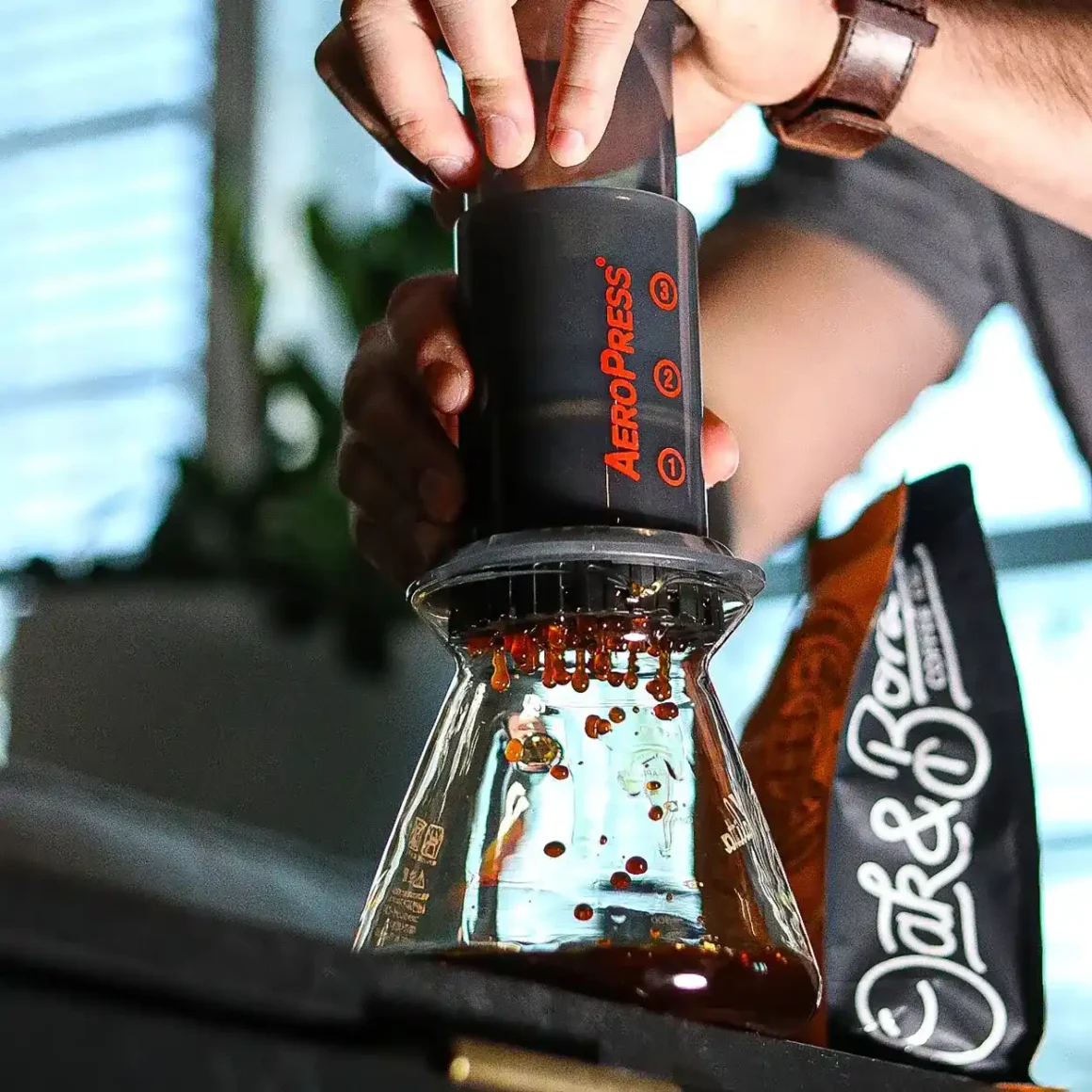
In a world growing increasingly conscious of environmental sustainability, the choice between AeroPress and Pour-Over coffee brewing methods can also be influenced by their ecological footprints. Both methods have their own set of environmental considerations, and some strategies can be employed to minimize waste and promote sustainability. This discussion aims to shed light on the eco-friendly aspects and environmental impacts associated with each brewing method, as well as suggest waste reduction strategies for a more sustainable coffee brewing experience.
The Eco-Friendly Aspect of AeroPress
The AeroPress method stands out for its compact design and efficiency, which also translate to some eco-friendly benefits:
- Material Efficiency: The AeroPress uses a small amount of coffee and water compared to other brewing methods, which can contribute to lower resource usage over time.
- Filter Usage: Although disposable paper filters are commonly used with the AeroPress, reusable metal filters are available as a more eco-friendly alternative. These reusable filters reduce waste and the need for continual purchases of disposable filters.
- Durability: The durability of the AeroPress coffee maker itself is a plus. Its sturdy construction means it’s likely to last for many years with proper care, reducing the need for replacement and thereby minimizing waste.
Environmental Considerations for Pour-Over
The Pour-Over method, while elegant and capable of producing nuanced coffee flavors, has its own set of environmental considerations:
- Material Usage: Pour-over brewing often requires more coffee and water, especially when brewing larger quantities, which could lead to higher resource usage.
- Filter Waste: Similar to AeroPress, pour-over brewing typically utilizes paper filters which, if not composted, contribute to waste. However, reusable metal or cloth filters are available as an eco-friendly alternative.
- Equipment Longevity: High-quality pour-over coffee makers, especially those made of glass or ceramic, can last for many years with proper care, contributing to long-term sustainability.
Waste Reduction Strategies
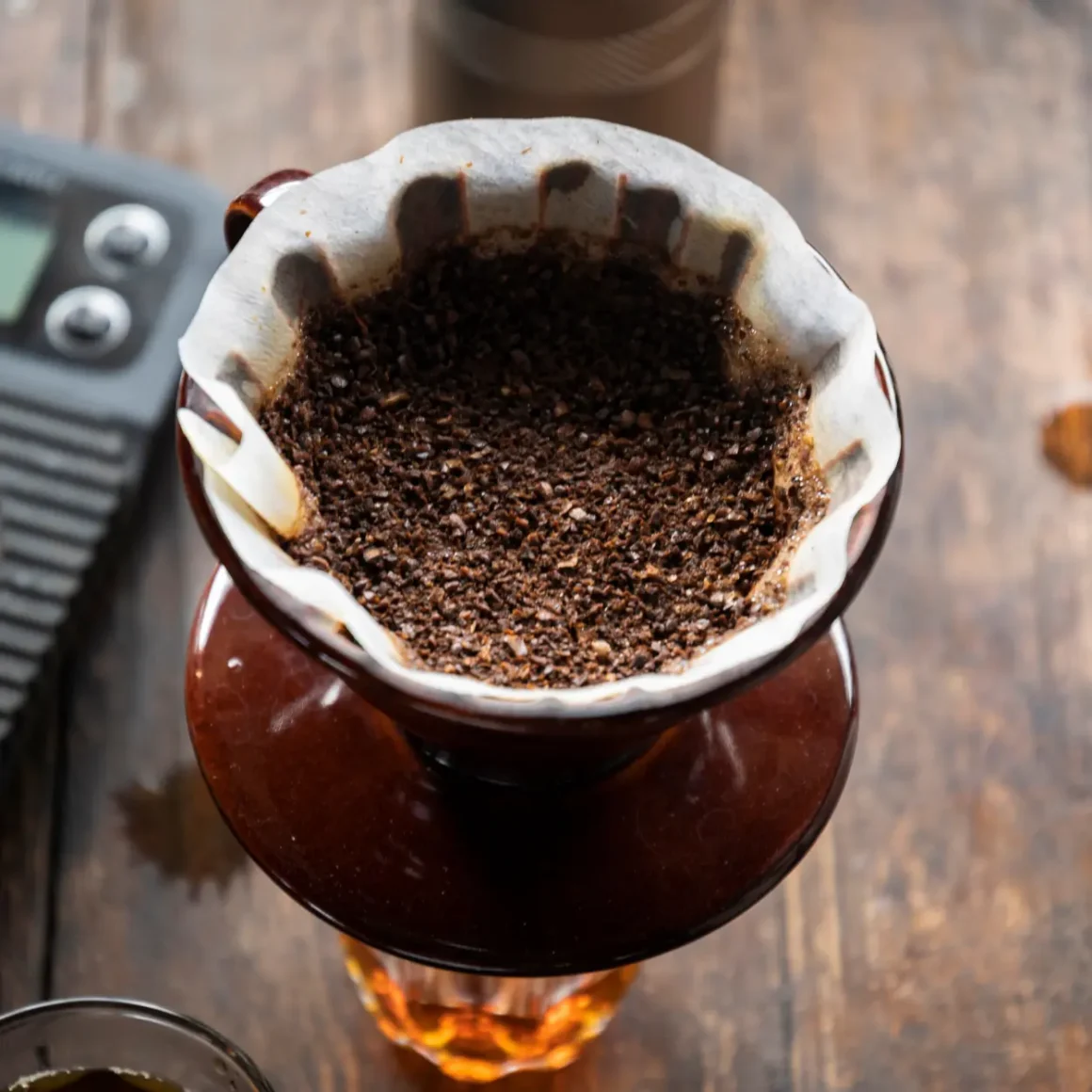
Adopting waste reduction strategies can further enhance the environmental-friendliness of both AeroPress and Pour-Over brewing methods:
- Reusable Filters: Opting for reusable metal or cloth filters instead of disposable paper filters can significantly reduce waste.
- Composting: Used coffee grounds and biodegradable paper filters can be composted, turning waste into valuable compost for gardens. (3)
- Mindful Resource Usage: Being mindful of the amount of coffee and water used, and adjusting quantities to avoid overuse can contribute to sustainability.
- Investing in Quality Equipment: Investing in well-made, durable brewing equipment that will last for many years can reduce the need for replacements, minimizing waste in the long run.
Both AeroPress and Pour-Over brewing methods offer avenues for eco-friendly coffee brewing. Through mindful practices and the adoption of waste reduction strategies, coffee enthusiasts can enjoy a rich brewing experience while minimizing their environmental impact.
AeroPress vs Pour-Over: Conclusion
The voyage through the realms of AeroPress and Pour-Over brewing unveils a spectrum of experiences, each with its unique allure. The AeroPress emerges as a champion of speed, portability, and a robust brew, making it a go-to for those with a bustling lifestyle. On the flip side, the Pour-Over method invites a slower pace, a meditative process that rewards with a complex and nuanced cup of coffee, appealing to the purists and those who revel in the ritual of brewing.
The decision between AeroPress and Pour-Over is a personal one, often influenced by individual lifestyle, taste preferences, and the value placed on convenience versus the art of brewing. Both methods have the potential to cater to a range of coffee palates, from the bold and hurried to the refined and relaxed.
As we wrap up this exploration, we hope the insights provided assist you in making an informed choice that resonates with your coffee desires. May your choice of brewing method enrich your coffee journey, bringing joy and satisfaction with each brew. The world of coffee is vast and flavorful, with endless possibilities awaiting your discovery.
FAQ
Can the grind size affect the flavor profile of the coffee in both brewing methods?
Yes, the grind size significantly affects the flavor profile in both methods; a finer grind is often used for AeroPress for a stronger brew, while a medium-coarse grind is preferred for Pour-Over to extract nuanced flavors.
Which brewing method is more environmentally sustainable?
Both methods can be environmentally sustainable, especially when using reusable metal or cloth filters instead of disposable paper ones, and by composting used coffee grounds.
How does water temperature impact the brewing process in AeroPress and Pour-Over?
Water temperature is crucial in both methods; it affects the extraction rate and, consequently, the flavor and strength of the coffee. A range of 185°F to 205°F is often recommended for both methods.
Is there a significant difference in caffeine content between AeroPress and Pour-Over coffee?
The caffeine content can vary based on factors like coffee-to-water ratio and brewing time, but generally, AeroPress can yield a stronger, more concentrated coffee, which may translate to higher caffeine content compared to Pour-Over.









